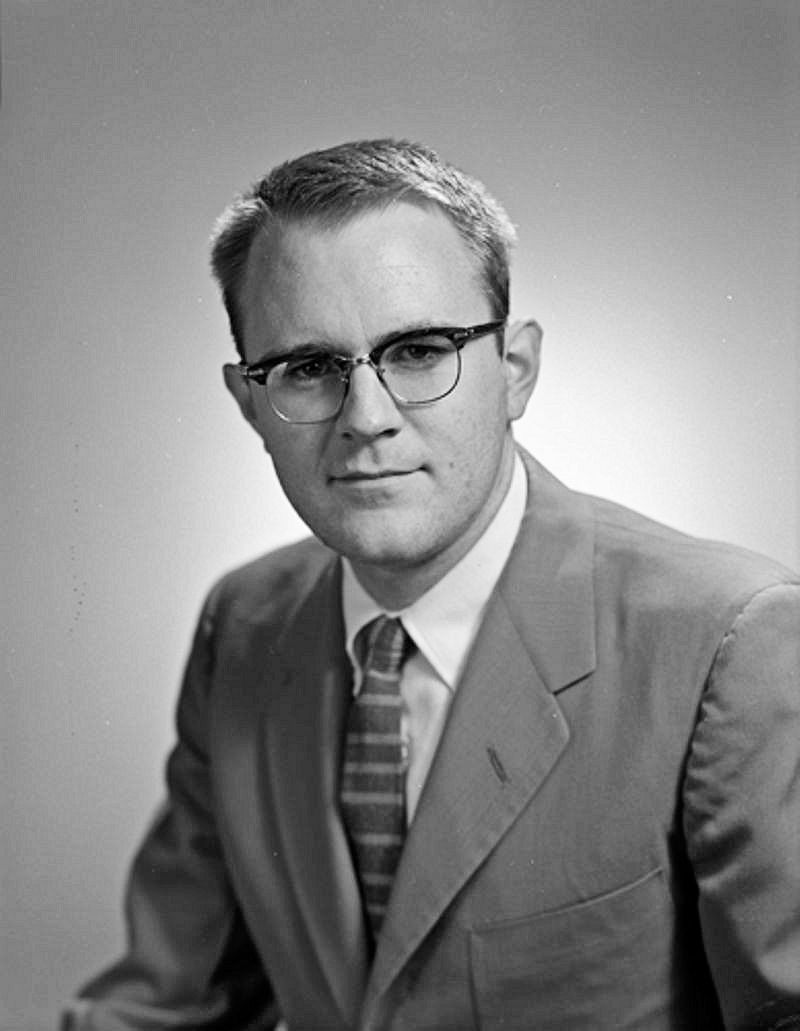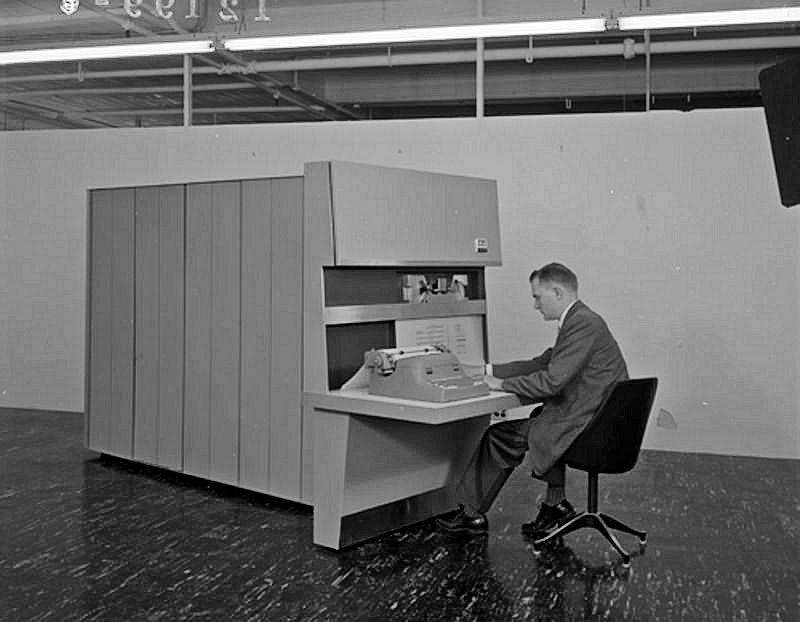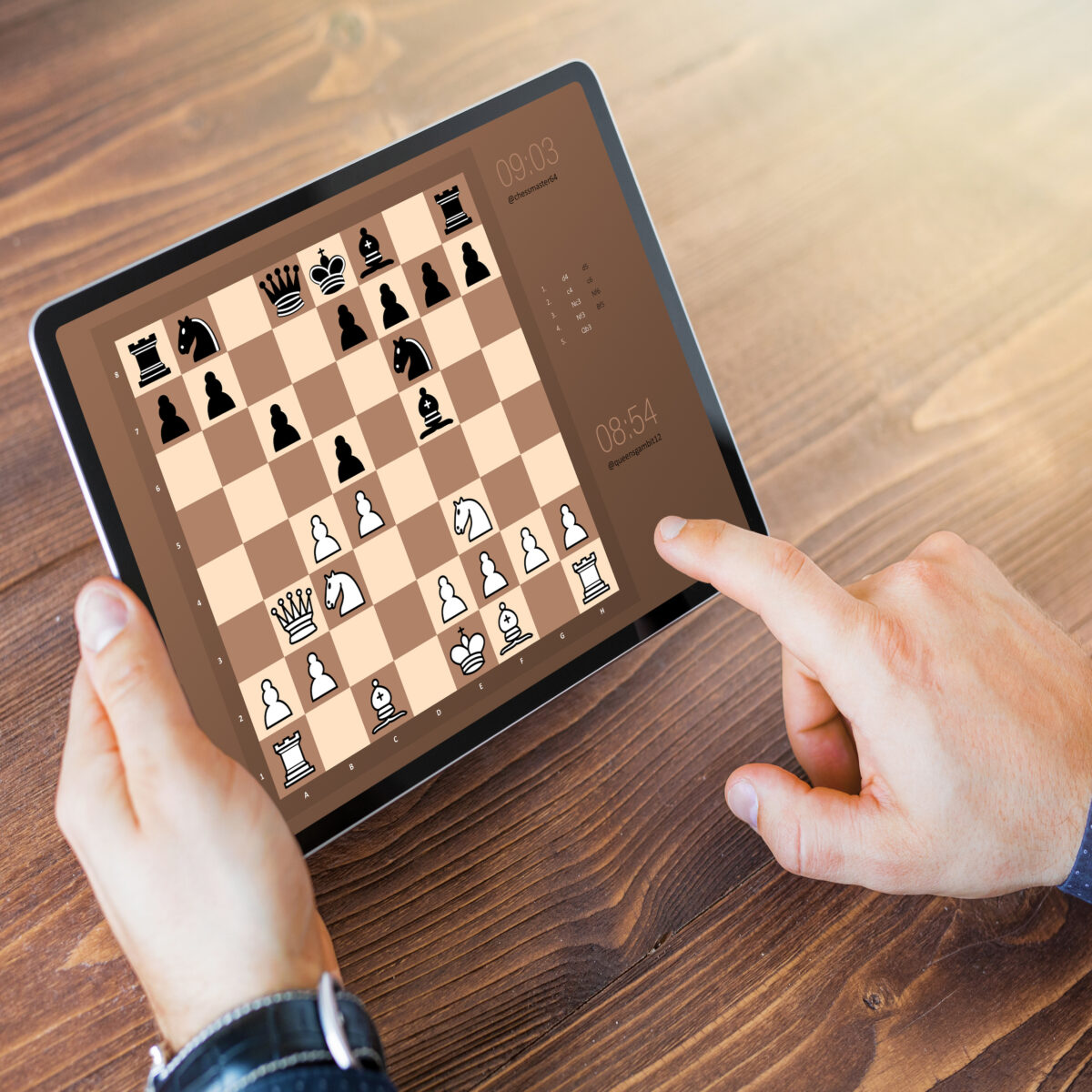Gordon Bell may have worn badge number 80 at Digital Equipment Corp (DEC), but he had a profound influence on the development of minicomputers, including the groundbreaking DEC VAX 11/780 superminicomputer. He became a grandmaster of computer architecture and collected the flotsam, jetsam, and ephemera of computing’s history, preserving the early history computers that few others would take the time or make the effort to collect. His collection became the seed for the Computer History Museum, which he helped turn into a reality with his wife, Gwen.
Bell was born in the small farming community of Kirksville, Missouri in 1934. His father owned an electrical contracting business and appliance store, and Bell grew up working in the family business. A heart condition kept him bedridden during the second grade, but by age 12, Bell was wiring local houses and farms for electric power under the federal Rural Electrification Association program. Bell’s father paid his son a working person’s salary of $6 a week because he was doing a professional’s work. In his Oral History recorded by the Computer History Museum in 2005, Bell recalls that he was “one of the best dishwasher repair people in the area because it had cams and cycles and mechanical stuff.”
His early work experience combined with some enthusiastic math and science teachers convinced Bell that he wanted to become an engineer, because repairing stuff was “okay” but inventing them “seemed like a lot more fun.” Consequently, Bell applied to several engineering-focused universities including Case Institute of Technology, Rensselaer Polytechnic Institute, Rochester Institute of Technology, Illinois Institute of Technology, and MIT. Several schools accepted Bell. He chose to attend MIT because he “apparently was brand conscious.”
At MIT, Bell participated in two co-op programs with General Electric (GE) and American Electric Power (AEP). At GE, he developed a signal multiplexer for a gas turbine jet engine test stand that allowed a Leeds & Northrup multichannel chart recorder to record more temperature and pressure sensor data than its original design allowed. He also developed an analog-to-digital converter for a military radar project. However, GE had a large room containing a sea of desks for the engineers, and Bell realized he did not want to become a cog in a machine by working at such a company. At AEP, Bell wrote a program that calculated the power needed to melt accumulated ice on power transmission lines. The program ran on the company’s IBM 650 Magnetic Drum Data Processing Machine, the world’s first mass-produced electronic computer. Bell earned his BSEE from MIT in 1956 and his MSEE in 1957. During his time at MIT, Bell wrote programs for the MIT Whirlwind and the IBM 650 and 704 computers.
At the suggestion of Gordon Brown, MIT’s EE Department head and an Australian, Bell decided to head off to Australia to teach at the University of New South Wales, which was just starting an EE department. At the University of New South Wales, Bell taught graduate classes in logic design, digital systems design, and computer design. With his friend Bob Brigham, Bell also wrote an assembler for the university’s English Electric DEUCE computer. The DEUCE was based on the Pilot ACE computer, designed by mathematician and early computer pioneer Alan Turing. Bell was already becoming familiar with the most important computer architectures of the day.
Bell went to Australia on a Fullbright scholarship. When he arrived in Australia after a 20-day ocean voyage, Bell met his wife-to-be, another Fullbright Scholar named Gwen Druyor. They rented a house with three other roommates in Sydney for the college term. By the end of the term, Bell was ready to propose marriage, and he proposed in true engineer fashion by writing a program for the DEUCE computer that caused the machine to spell out his marriage proposal in dot-matrix form using the CRT in the operator’s console that displayed the contents of the computer’s serial, circulating, delay-line memories as a 1024-point, 32×32-bit memory map. This was likely the world’s first electronic proposal of marriage. Gwen accepted.
When they returned from Australia, Bell interviewed for positions at several companies including Philco, GE, and NCR. Ultimately, he took a position as a staff engineer at MIT’s Speech Research Laboratory so that he could work near Harvard where Gwen was finishing her Master’s degree. Eventually, Bell started working for MIT’s Research Laboratory for Electronics (RLE) and ended up with an assignment to design a tape controller for the TX-0, an early transistor-based computer developed at MIT’s Lincoln Lab. Ken Olsen managed the TX-0 project, and Wesley Clark, a physicist, architected the TX-0 and designed the computer’s logic. Olsen founded DEC in 1957.
Bell needed logic modules to develop the TX-0 tape controller’s design, so he turned to DEC because, at the time, transistorized logic modules – System Building Blocks, later renamed System Modules – represented the company’s chief business. These modules were the conceptual predecessors of standard IC logic chips, but they had edge connectors instead of IC pins. Bell apparently spent a lot of time visiting DEC, because the company offered him an engineering job in May, 1960. Bell accepted and left RLE before he’d finished designing the TX-0 tape controller. When Bell arrived at DEC in August 1960, the company was finishing construction of its first prototype of the 18-bit PDP-1 minicomputer, which was based on DEC’s System Modules using much of the TX-0’s logic design. Bell wrote some software for the PDP-1, including a floating-point package, and worked on various logic design problems with the minicomputer.

Gordon Bell, circa 1960. Image credit: Computer History Museum
Then, ITT placed a very large order for specially configured PDP-1 minicomputers. These custom machines would be used in ITT’s torn-tape teletype business, which was a paper-tape version of a store-and-forward messaging network. Teletype messages would come into ITT’s central office on 5-bit Baudot Teletype machines, and these messages with their final destinations would be punched onto paper tapes, handed to human runners, and then taken to the appropriate Teletype machine that was connected to telegraph lines that would convey the message to its final destination.
The custom-built PDP-1 minicomputers, which were redesignated as ADX 7300 machines, would replace the intermediate paper tape steps and the runners, who often wore roller skates to speed the message forwarding. This automated message-forwarding scheme required interfacing the PDP-1 minicomputers directly to the telegraph lines, replacing the Baudot Teletype machines. That’s when Gordon Bell invented the first UART (universal asynchronous receiver/transmitter).
Prior to the UART’s invention, electronic conversion of Baudot signaling was usually performed with monostable multivibrators (one-shots) that needed a lot of analog tweaking using potentiometers to set the timing just right. This scheme was susceptible to drift due to time and temperature. Bell’s all-digital UART oversampled the incoming Baudot signaling, found the center of each serial bit, and assembled a parallel word using a precise bit-rate clock, a state machine, and a shift register. Bell’s design required fifty of DEC’s 4000 Series low-speed (500KHz) System Building Block modules to implement eight Teletype interfaces. The UART became the fundamental building block used for serial communications over the next several decades. DEC made between 40 and 50 PDP-1 minicomputers, and nearly half of them were configured as ADX 7300 machines for ITT.

DEC PDP-1 minicomputer configured as an ITT ADX 7300. Image credit: Computer History Museum
Bell’s experience with DEC’s lower-cost, lower-speed logic modules came in handy for his next project. He became the project engineer for the 18-bit PDP-4 minicomputer, specifically designed for process control. Bell did not bother to make the PDP-4 compatible with the PDP-1 because he’d not yet learned the value of software compatibility. In fact, the industry as a whole had not yet learned this lesson. Because the PDP-4 was being designed as a process control computer, software compatibility with the PDP-1 didn’t seem important to Bell, and he optimized the design for cost. The resulting computer’s sales price was less than half that of the PDP-1. DEC based the architectures of the PDP-7, -9, and -15 minicomputers on Bell’s PDP-4 design.
Next, Bell tackled the design of the 36-bit PDP-6 minicomputer. This machine had many advanced architectural features, but DEC sold only 23 of them and decided to discontinue the architecture. However, DEC eventually reversed this decision and re-implemented the PDP-6 architecture using Flip-Chip modules, the successors to the company’s Systems Modules. The new machine, called the PDP-10 (later the DECsystem-10), was extremely successful and was widely adopted by many universities and other institutions.
At this point, Bell decided to take a sabbatical from DEC. He became an Associate Professor at Carnegie Institute of Technology (soon renamed Carnegie Mellon University) and spent six years teaching computer science and writing. He started writing his first book, “Computer Structures: Readings and Examples,” with colleague Allen Newell in 1968 and published it in 1971. Bell started collecting bits and pieces of early computers during this time. A second edition of this book appeared in 1982 and another book titled “Computer Engineering: A DEC View of Hardware Systems Design,” written with colleagues J. Craig Mudge John E. McNamara, appeared in 1978.
While teaching and writing at Carnegie, Bell consulted for DEC on several projects including DEC’s most successful minicomputer, the 16-bit PDP-11. DEC sold about 600,000 PDP-11 minicomputers over its many iterations and generations. Bell also consulted for several other computer companies, further enriching his deepening knowledge of computer architectures. When Bell finally returned to DEC in 1972, it was as the company’s VP of Engineering.
Shortly after his return to DEC, Bell’s engineering team started thinking about a next-generation minicomputer. The decision to extend the PDP-11’s architecture produced DEC’s first superminicomputer, the 32-bit VAX. “VAX” is an acronym for “Virtual Address eXtension,” and the VAX was a 32-bit extension to the PDP-11 architecture that used virtual memory addressing to exploit a very large address space. DEC sold VAX superminicomputers from 1977 through 2000. The VAX models were the pinnacle of DEC’s minicomputer prowess.
Bell suffered a heart attack during a ski trip in early 1983, likely from continuing friction with Ken Olsen combined with his longstanding heart condition. He soon resigned from DEC. However, he recovered after a few months and founded Encore Computer, which released a shared-memory, multiprocessor machine in 1985. In 1986, he joined Ardent Computer Corp, a desktop multiprocessing supercomputer maker, as VP of Engineering. Bell started to consult for Microsoft in 1991 and joined the company in 1995 to work on telepresence.
In the background, Bell’s hobby of collecting bits and pieces of the computer revolution, including entire computers, evolved from a small static display, tucked into a converted coat closet in DEC’s ML-12 building in Maynard Massachusetts, into the Boston Computer Museum, which he co-founded with his wife Gwen in 1979. Gwen Bell served as the museum’s first president for 20 years. After a few iterations, that institution became the Computer History Museum located in Mountain View, California. The Bells divorced in 2002. Gordon Bell married Sheridan Sinclaire in 2009.
Many people have made important contributions to the computer’s development since the days of ENIAC. Some of these people are considered pioneers. Some are considered giants. Bell was clearly both. I can think of no one who has done more for the computer’s evolution than Gordon Bell, the Grandmaster of Computer Architecture. Gordon Bell died on May 17, 2024.
References
“Oral History of Gordon Bell, Part 1,” Computer History Museum, June 23, 2005
“Oral History of Gordon Bell, Part 2,” Computer History Museum, June 23, 2005
“Oral History of Gordon Bell, Part 3,” Computer History Museum, June 23, 2005
“Oral History of Gordon Bell, Part 4,” Computer History Museum, June 23, 2005






When I read your description of Bell & Newell’s 1971 book, a *bell* went off in my head! Sure enough, there’s a copy in my library. I’ve only skimmed through it, but it seems to contain a remarkable amount of history.
I too have a copy of that book, MD. I bought it years ago because it includes a detailed description of the HP 9845 desktop computer, a machine that I played a very small role in designing.